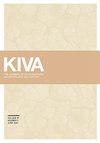Paleodiet of Turkeys (Meleagris gallopavo) in the Early Pueblo Period of the Northern Southwest
IF 0.4
0 ARCHAEOLOGY
Kiva-Journal of Southwestern Anthropology and History
Pub Date : 2021-03-21
DOI:10.1080/00231940.2021.1891713
引用次数: 4
Abstract
Turkey domestication in the northern Southwest is not clearly defined, in part because wild turkeys are difficult to differentiate from domestic turkeys based on skeletal morphology. Stable isotope analysis is a method that researchers have used extensively to help build a picture of how turkey populations were managed by humans. Earlier evidence for C4 plant consumption by turkeys is limited to a small number of published studies. Using a stable isotope mixing model with a sample of 19 turkey bones from five early Pueblo habitation sites in northwestern New Mexico and southwestern Colorado, we estimated that the turkey diet consisted of 60–89% C4 plants, with the remainder consisting of C3 plants and invertebrates. This contributes to the existing body of data on turkey diet in the northern Southwest during the Basketmaker III and Pueblo I periods and shows that a mixing model can be useful for turkey paleodietary analysis.西南北部普韦布洛早期火鸡(Meleagris gallopavo)的古饮食
在西南北部,火鸡的驯化没有明确的定义,部分原因是根据骨骼形态很难将野生火鸡与家养火鸡区分开来。稳定同位素分析是研究人员广泛使用的一种方法,可以帮助建立人类如何管理火鸡种群的图景。火鸡食用C4植物的早期证据仅限于少数已发表的研究。利用稳定的同位素混合模型,我们从新墨西哥州西北部和科罗拉多州西南部的五个早期普韦布洛人居住地采集了19块火鸡骨头样本,估计火鸡的饮食由60-89%的C4植物组成,其余由C3植物和无脊椎动物组成。这有助于在篮子制造者III和普韦布洛I时期对西南北部火鸡饮食的现有数据,并表明混合模型可以用于火鸡的古饮食分析。
本文章由计算机程序翻译,如有差异,请以英文原文为准。
求助全文
约1分钟内获得全文
求助全文
来源期刊
CiteScore
0.70
自引率
33.30%
发文量
31

 求助内容:
求助内容: 应助结果提醒方式:
应助结果提醒方式:


